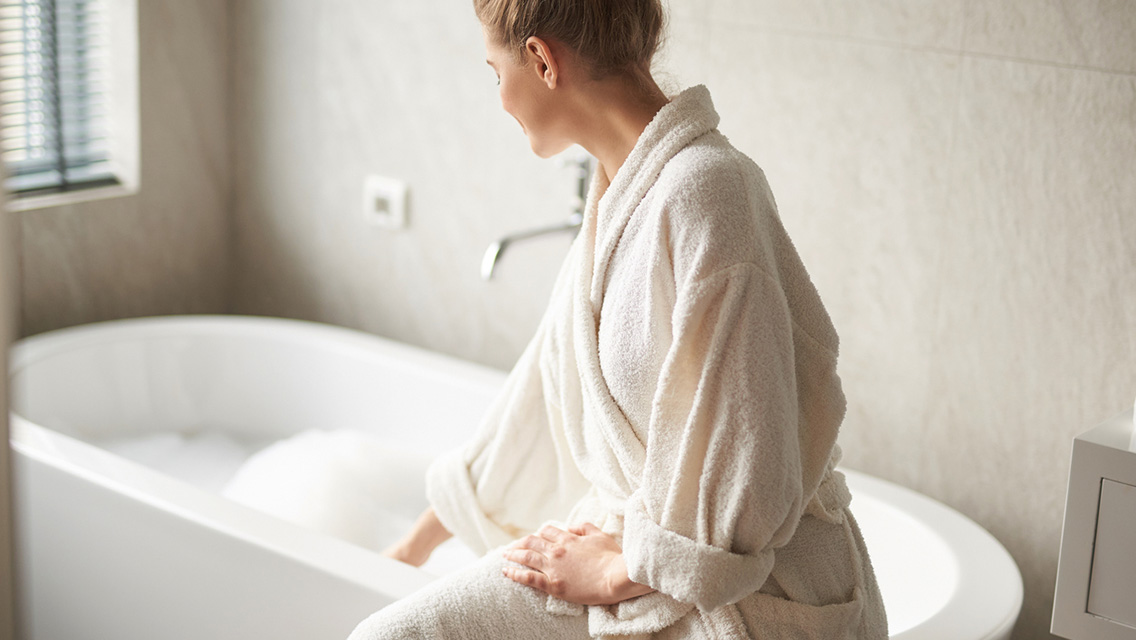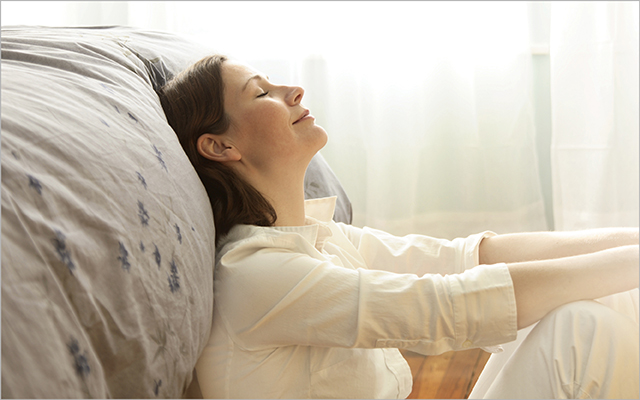When you ask psychologist Alice Domar, PhD, what complaints she hears most often from her patients, she has a surprising reply. It’s less of a complaint than mercy plea, says Domar: “They ask, ‘Why can’t I just be left alone for a while?’”
Domar, director of the Domar Center for Mind/Body Health in Waltham, Mass., and coauthor of Be Happy Without Being Perfect, says that the demands of overbusy lifestyles tend to land particularly heavily upon women, who are expected to “be there” constantly for their kids, a spouse, partner, friends and coworkers. But men with family responsibilities, she notes, often suffer similar burdens.
A certain amount of unstructured solitude is crucial to each of us — for recharging our psychic batteries and getting perspective on daily challenges. The stress that results from too rarely being alone can tax your immune system, interrupt your sleep and substantially increase your anxiety.
Even when people do get alone time, they try to “get things done” instead of relaxing. The key to healthy solitude? A few thoughtful choices and firm boundaries.
Stress Source
Lack of Alone Time: Domar defines solitude as “a sense of comfort with being by one’s self” (not to be confused with the isolated feeling called loneliness). For many, the only time they spend alone is duty-bound or task-focused, not peaceful and unpressured.
5 Barriers to Overcome
- Guilt. People who balk at putting their own needs first may have trouble claiming the modest amount of time it takes to reboot and recharge in solitude.
- The Endless To-Do List. In part because it’s so rare for us to run out of “important” things to do, the idea of being alone and not working on something tends to make many of us uncomfortable, says Domar. We feel a compulsion to be productive 24/7 — even when it’s not strictly necessary.
- Perfectionism. “Many people can’t take time for themselves until everything is ‘just right,’” she says. “And how often is everything just right?”
- Sociability as a Liability. It can be hard to resist the social habit, or say no to invitations from others, even when lack of social stimulation is what we crave.
- Inner Turmoil. Real solitude is alone time plus inner peace — and many people, left entirely to their own devices without outside distractions, quickly begin to feel ill at ease.
5 Coping Strategies
- Put Yourself on Your To-Do List. Pencil in some solitary time for yourself on the very same list where you’ve written “finish the report” and “pick up the kids.”
- Refill Before Dispensing. Recognize that lack of solitude makes it hard to be a good husband, wife, parent or coworker. To share generously with others, you need to refill your own reserves first.
- See a Professional. “You may feel that you don’t deserve time to yourself,” Domar says. “It’s a tough issue, and I struggle with it myself. Get some therapeutic help.”
- Reduce Stimuli. Solitude won’t really renew you if it’s cluttered up with sensory inputs. “Most of us have a lot of stimuli coming at us, all the time, and we create more by turning on the TV or the iPod,” she says. “Think about the quiet that the cavemen had at night.”
- Meditate. Meditation is a healthful and peaceful form of solitude. “The immune systems of people who meditate are better,” she says. “Meditators get fewer headaches, sleep better and are less anxious — which means that if you purposely still your mind in solitude, you get healthier.”
Stress Solver
Thalassotherapy: Soak your stress away in a bath of seawater.
The French love saltwater baths, seaweed wraps and marine-mud packs, and they’ve dubbed these ocean-oriented health enhancers thalassotherapy, from the Greek thalassos, meaning “sea.” The theory is that seawater bathing replenishes needed minerals in our bodies through the skin, but the main benefit is probably an overall feeling of well-being and calm that comes from returning, solo, to the salty source of all life. The best-known thalassotherapy centers are on the French coast and elsewhere in Europe, but some stateside spas offer the treatments, and there are salt-and-mineral blends you can add to your own bath water.
Origin: Having noted what he took to be the healing properties of saltwater, seaweed and mud plasters during his years in France’s tropical colonies, Dr. Louis Bagot in 1899 established the world’s first thalassotherapy center in Brittany. After Tour de France champion Louison Bobet credited his recovery from a 1961 auto accident to the treatments, thalassotherapy took off.
Benefits: Thalassotherapy proponents claim many concrete health benefits from the treatments — including replenishment of minerals, a boost to the immune system, and help with circulatory problems, respiratory conditions and inflammation. According to Brent Bauer, MD, who studies the health effects of spa treatments as part of his work at the Mayo Clinic, there’s little hard-science research on the effects of baths and wraps, but he cites anecdotal evidence that the relaxation effect of bathing is very real. And the testimony of people like bike champion Bobet — who claims his thalasso regimen helped him regain the use of his legs after a near-crippling auto crash — adds credibility to the idea that this primal pampering is good for you.
Simple Steps: In a fully equipped thalasso spa (which may include a specialized tub with built-in massage from carefully choreographed water jets), options range from simple saltwater soaks and seaweed, mud and algae wraps, to elaborate setups like the Vichy shower (which spritzes you with a gentle “rain” while you’re massaged). If you simply want to add salt, seaweed and minerals to your own bath, spa professionals can advise you on the packaged blends that are available.
This article originally appeared as “”You” Time.”




This Post Has 0 Comments